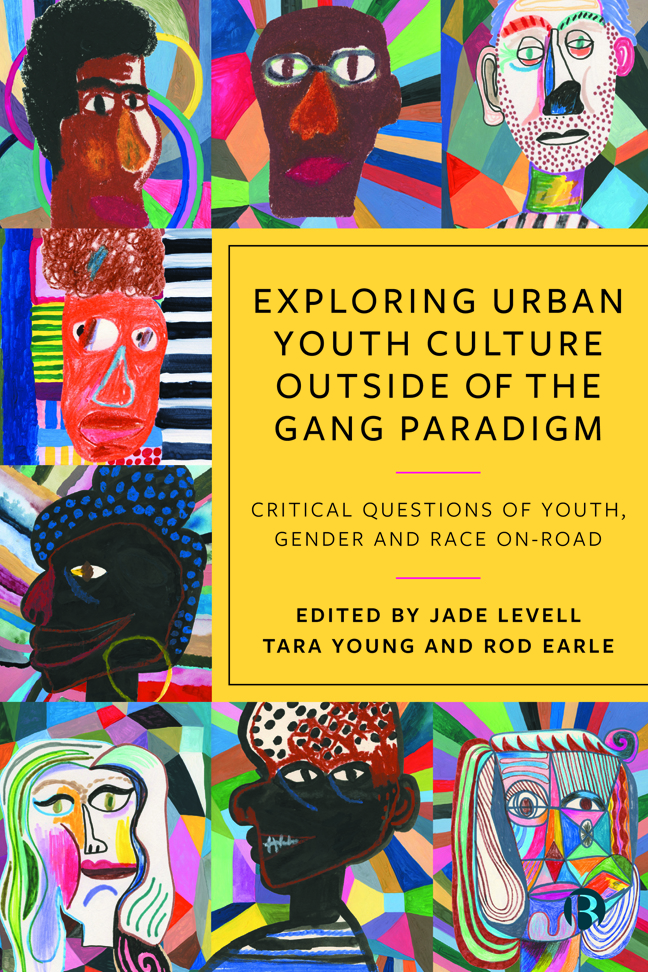 Exploring Urban Youth Culture Outside of the Gang Paradigm
Exploring Urban Youth Culture Outside of the Gang Paradigm Book contents
- Frontmatter
- Contents
- Notes on Contributors
- Foreword
- Preface
- 1 Introduction: Youth and On-Road – Making Gender and Race Matter
- 2 Black, British Young Women On-Road: Intersections of Gender, Race and Youth in British Interwar Youth Penal Reform
- 3 Tainted Love: Intimate Relationships and Gendered Violence On-Road
- 4 (The) Trouble with Friends: Narrative Stories of Friendship and Violence On-Road
- 5 The Sexual Politics of Masculinity and Vulnerability On-Road: Gender, Race and Male Victimisation
- 6 The Road, in Court: How UK Drill Music Became a Criminal Offence
- 7 On-Road Inside: Music as a Site of Carceral Convergence
- 8 Jeta e Rrugës: Translocal On-Road Hustle, Within and from Albania
- 9 ‘He's shown me the road’: Role Model and Roadman
- 10 Diary of an On-Road Criminologist: An Auto-Ethnographic Reflection
- 11 Conclusions, Compromises and Continuing Conversations
- Index
6 - The Road, in Court: How UK Drill Music Became a Criminal Offence
Published online by Cambridge University Press: 24 January 2024
- Frontmatter
- Contents
- Notes on Contributors
- Foreword
- Preface
- 1 Introduction: Youth and On-Road – Making Gender and Race Matter
- 2 Black, British Young Women On-Road: Intersections of Gender, Race and Youth in British Interwar Youth Penal Reform
- 3 Tainted Love: Intimate Relationships and Gendered Violence On-Road
- 4 (The) Trouble with Friends: Narrative Stories of Friendship and Violence On-Road
- 5 The Sexual Politics of Masculinity and Vulnerability On-Road: Gender, Race and Male Victimisation
- 6 The Road, in Court: How UK Drill Music Became a Criminal Offence
- 7 On-Road Inside: Music as a Site of Carceral Convergence
- 8 Jeta e Rrugës: Translocal On-Road Hustle, Within and from Albania
- 9 ‘He's shown me the road’: Role Model and Roadman
- 10 Diary of an On-Road Criminologist: An Auto-Ethnographic Reflection
- 11 Conclusions, Compromises and Continuing Conversations
- Index
Summary
Introduction
Urban space has long haunted the penal and criminological imagination; as a site of crime and disorder, where ‘respectable fears’ (Pearson, 1983) about overcrowding, mixing and safety co-exist with political ideologies and government policies that treat urban social life as a spatial, moral and socio-political problem to be monitored, regulated and controlled. In fact, the relationship between crime and the urban realm goes to the heart of criminology, as an academic discipline that is marked by an ‘urban bias’ (Donnermeyer, 2016: 1) due to its emphasis on studying crime as a quintessentially urban social phenomenon. Perceptions of ‘society’, ‘community’, ‘deviance’ and ‘conflict’, therefore, cease to exist in the abstract. They become designed into, associated with and represented by urban geography – as metaphors for physical locations and social spaces where hierarchies of power, social relations and social structures take shape.
Nowhere is this more evident than the areas of the city that are imagined, researched, sensationalised, suspected and policed as pockets of ‘criminality’ where ‘incivility’, violence and danger are thought to fester uncontrollably. Targeted, surveilled, securitised, walled, barb-wired and patrolled as ‘no-go areas’, ‘urban wastelands’ or ‘crime-infested ghettoes’, such ‘dangerous’ places denote more than physical space. They feature as ‘symbolic locations’ where what is symbolised is the physical and cultural presence of those who are perceived and policed as socially and politically out of place, through processes of state-sanctioned, racial(ised) criminalisation (see, for example, Fatsis, 2021a, 2021b). The colonial ‘plantation archipelago’ (Wynter, nd: 372), the Jewish quarter in medieval and Nazi Europe and the contemporary urban ghetto (Duneier, 2016), stand as symbols of such ‘territorial stigmatisation’ (Hancock and Mooney, 2013) as vividly as they illustrate the ‘multi-racist’ (Keith, 1993) ideologies, politics and law enforcement that establish and police the inner city as a ‘zone of racial enclosure’ (Hartman, 2021: 94).
- Type
- Chapter
- Information
- Exploring Urban Youth Culture Outside of the Gang ParadigmCritical Questions of Youth, Gender and Race On-Road, pp. 100 - 114Publisher: Bristol University PressPrint publication year: 2023
